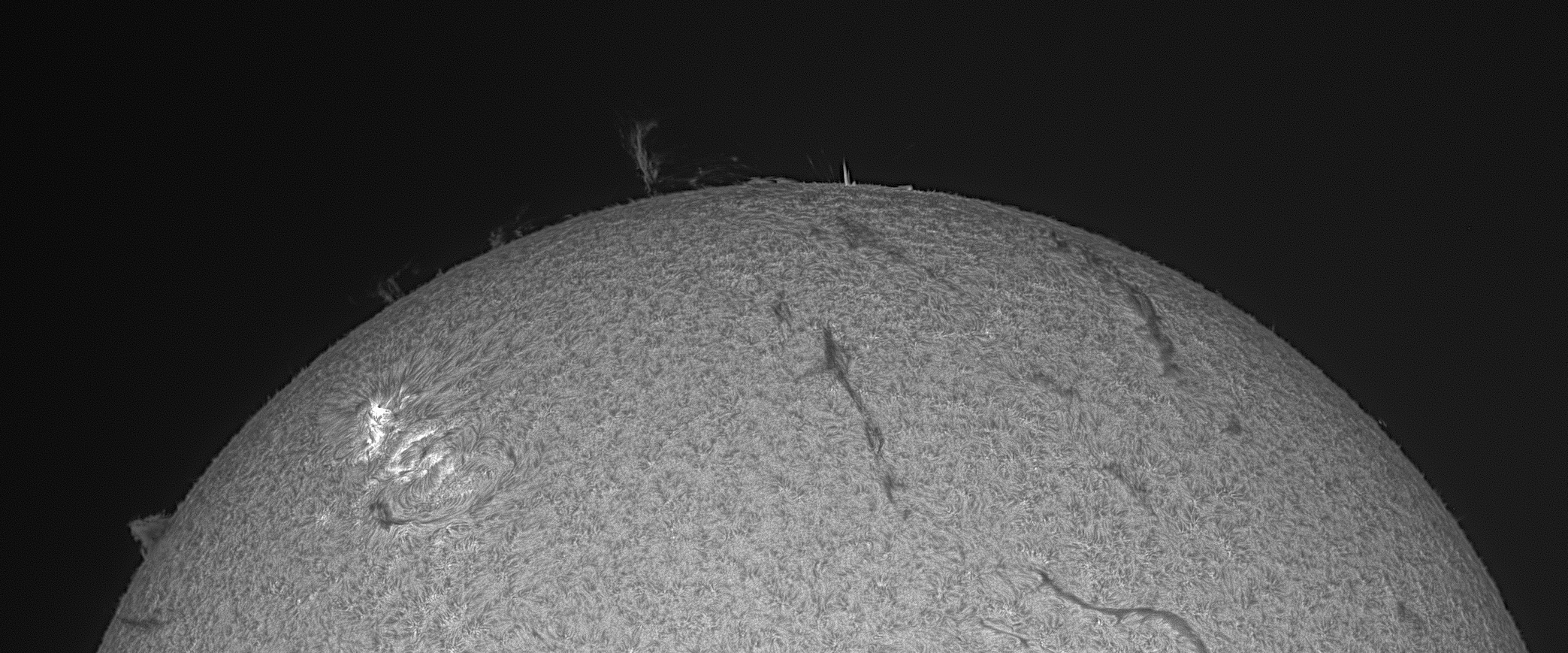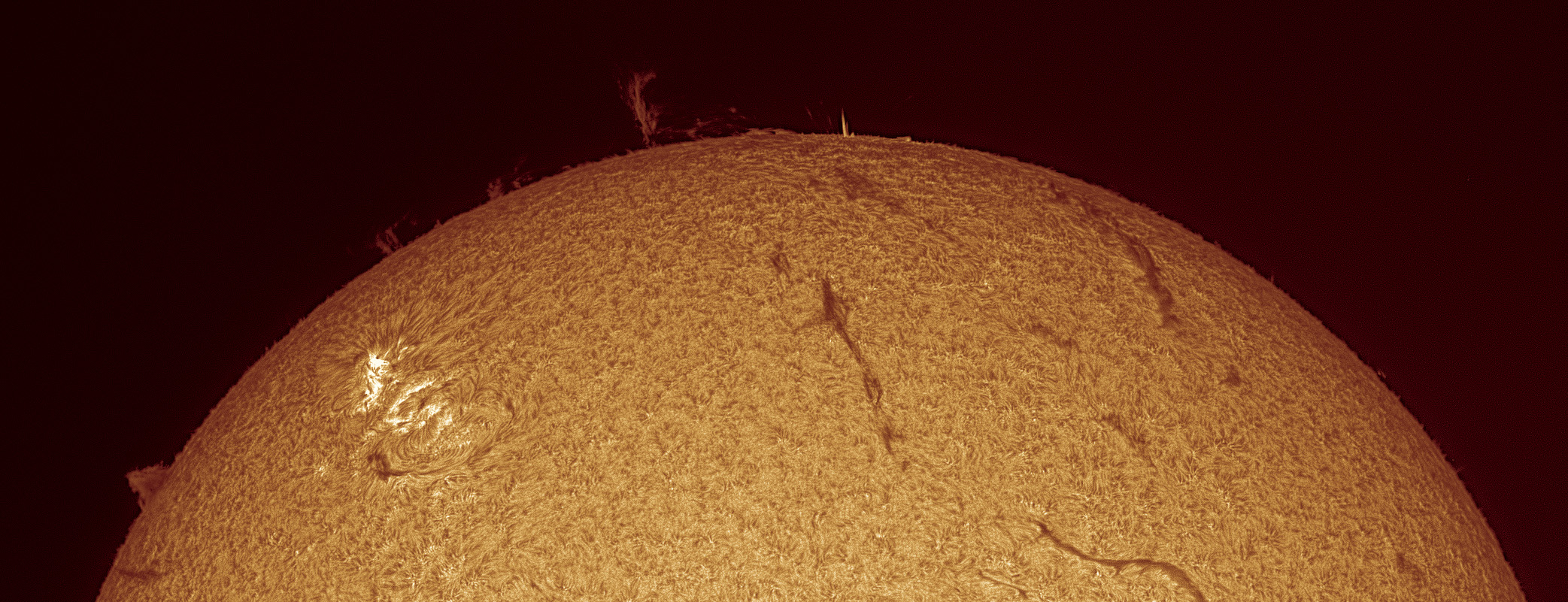
H-alpha Solar limb
October 4th 2022
The Sun when viewed through an exquisitely narrow band filter centered
on a wavelength of 656.28 nanometres (the hydrogen-alpha band) looks *very red*.
If you place your mouse cursor over the above image
you will reveal a red image of ionized hyrodgen gas, that replicates
the view seen by a warm human eye placed at the eyepiece end
of a Hydrogen-alpha filtered telescope.
This ionization process occurs abundantly in the 2000 kilometre thick layer
of solar atmosphere called the chromoshpere (or colour-sphere).
The temperature rises here from 6,100°C to 20,000°C,
hot enough to excite hydrogen to emit its singular red light.
As the hydrogen gas is ionized (i.e. charged) it is affected by the often turbulent magnetic field of the Sun.
This process is dynamic. It constantly churns in a manner not too disimilar to that of a boiling liquid.
Changes can be observed to occur in a matter of minutes.
As h-alpha light is monochromatic, a monochromatic sensor (used here) is the prefect tool
capture these images, as the camera only needs to record brightness variations of the chromosphere
(the colour is singularly red, so blue and green pixels on a colour sensor are
useless).
The human eye however, is better adapted to seeing subtle shading differences in polychromatic light
rather than only shades of red, hence the "contrast" of the view looks to be improved when
displayed in shades of grey and sometimes more creatively, by mapping brightness changes
to a more varied colour palette as in the rendition below.

AP130GTX + Astro-Physics Barcon
Coronado double stack SM90
FLIR/Point Grey Grasshopper USB 3.0, 9Mp CCD
Registax 500 Frames.

Copyright Peter J Ward 2022